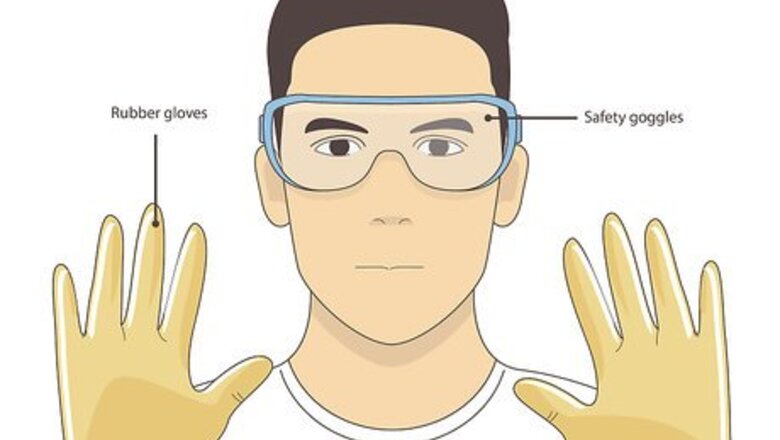
views
Getting Ready to Use Epoxy Resin
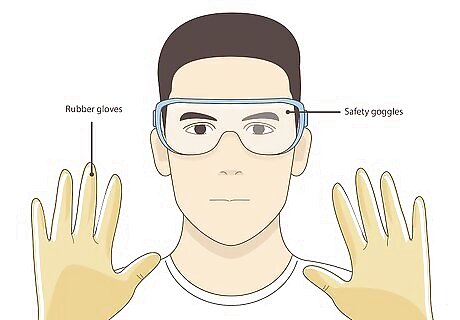
Wear protective equipment and work in a well-ventilated space. In it’s liquid state, epoxy resin can irritate your skin, eyes, and respiratory system. Before you start working with the resin, put on a pair of safety goggles and rubber gloves. Be sure to work in a well-ventilated area so you don’t breath in the fumes. Nitrile rubber gloves work best and can be found at hardware stores and online. You can find safety glasses at department stores, hardware stores, and online. Use a fan to help ventilate the area.
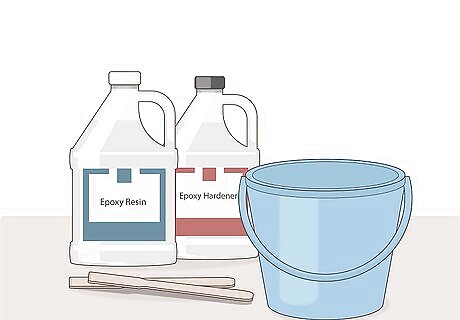
Set up the materials you need before you start working. Once you mix the epoxy resin, you need to use it immediately so it doesn’t harden. Gather the epoxy, buckets, and mixing implements you plan to use. Keep the rollers or brushes you will use to apply the epoxy nearby. Use a spatula or a paint stirrer to mix the epoxy. Mix epoxy together in a bucket if you’re spreading it over a larger surface like a floor or countertop. The bottom of an aluminum soda can is great for mixing a small amount of epoxy resin.
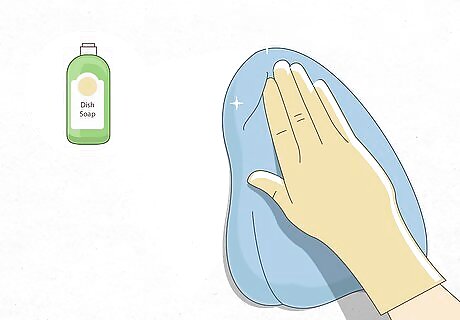
Clean the surface that you plan to seal with soap and water. Whether it’s a tabletop, a floor, or a small crack in a chair, you need to clean the surface to remove any dust or dirt that could get trapped in the resin. The dirt will affect the look, feel, and effectiveness of the resin. Use dish soap, warm water, and a rag or mop to wipe the surface down. Make sure the surface is dry before you apply epoxy resin to it.
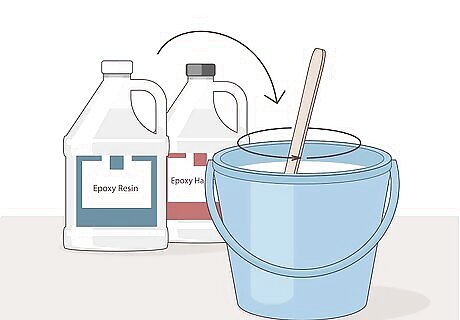
Mix the epoxy resin according to the instructions on the packaging. Depending on which brand and type of epoxy resin you’re using, you’ll need to combine the resin and hardener together before you use it. Use a bucket for a large amount of resin to be used on a bigger surface like a countertop or table. Use the bottom of an aluminum can to mix together a small amount of resin to fill or seal a small crack or break. Make sure the resin is mixed together properly or it could peel or crack. Apply the resin as soon as you mix it together so it doesn’t start to harden. If any epoxy resin gets on your skin, wash it off with soap and warm water immediately.
Sealing a Surface with Epoxy Resin
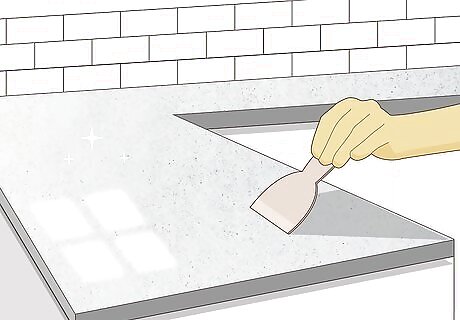
Use epoxy resin to add a high gloss seal to a surface. Epoxy resin has many applications. You can apply it to metal to keep it from rusting, or you can cover a floor or a countertop to add a durable protective coating. You can even add paint, mica powders, glitter, or metal foils to create different colors and styles.
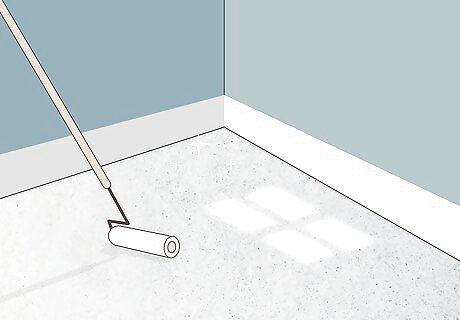
Seal a concrete floor with epoxy resin. Add a glossy, non-stick surface to your concrete floor by applying a thin, even layer of epoxy resin with a foam roller. Use smooth, broad strokes to apply the resin to the floor. The concrete will also last longer and is less likely to crack with a protective coating.Tip: If any air bubbles form the in the resin when you apply it, pop them with a pin or a toothpick while the resin is still liquid.
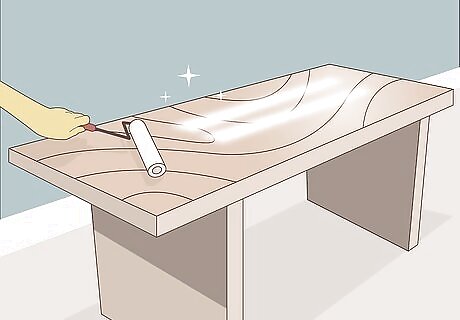
Protect wooden doors or tables with an epoxy seal. Use a foam roller for larger doors and tables, or use a paint brush to apply a coating of epoxy resin. When the resin cures, it will help preserve the wood and will add a glossy shine to it. The epoxy will also seal in the color of the stained wood so it lasts longer.
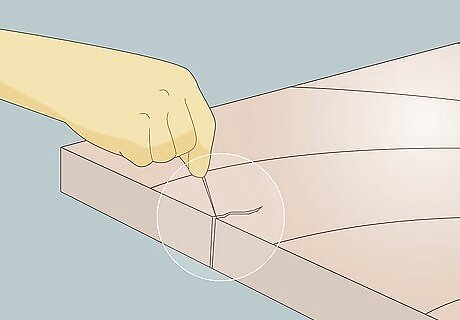
Fill a small crack in a surface by applying epoxy with a toothpick. Small cracks or breaks in plastic, wood, metal, or any other material can be filled and sealed with epoxy resin. Use a toothpick to apply the resin so it just fills the crack. When the resin cures, the crack will be completely sealed, airtight, and waterproof.
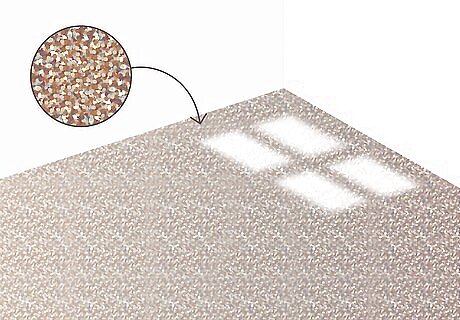
Create a decorative pattern on epoxy flooring. Lay down colored stone or vinyl chips in a pattern and cover them with a layer of epoxy resin. The clear epoxy will allow the colored stone or chips to be seen through the protective and glossy coat. The epoxy resin will also make the surface non-slip. Add colored quartz or stone aggregate to the top layer of epoxy to create a uniform color.
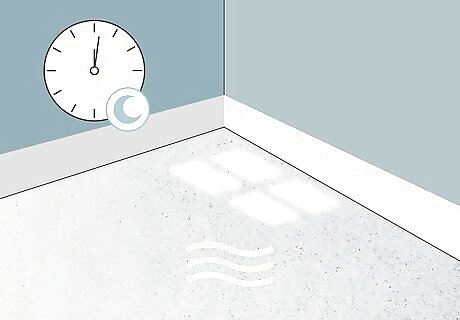
Allow the resin to harden overnight. Different brands and blends of epoxy resin will have different drying times, but most require several hours to fully harden. Allow the resin to dry overnight or at least 8 hours so it hardens completely. Check the packaging for specific drying times. Point a fan at the epoxy resin to dry it more quickly.
Using Epoxy Resin as an Adhesive
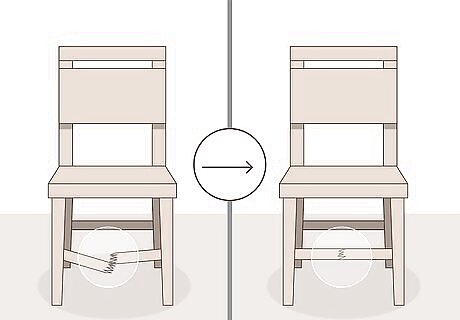
Apply epoxy resin as an effective bonding agent. Epoxy resin is a versatile adhesive and bonding agent that can retain its strength, fill gaps, and still retain its strength. You can use it to connect parts and make repairs. Epoxy resin uses 2 parts that are mixed together and cause a chemical reaction that causes it to harden, so it needs to be used right after you mix it according to the directions from the manufacturer. The time it takes epoxy to harden can vary based on the chemical hardener used by the manufacturer.
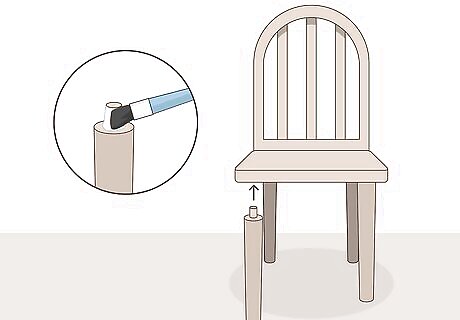
Fix loose-fitting joints in furniture with epoxy resin. Epoxy works as an adhesive and also fills in gaps without losing any of its strength. Brush a layer of epoxy resin onto both of the parts you want to join together, assemble them back together, and allow the epoxy to cure. For example, you can repair loose-fitting joints in a wooden chair by applying epoxy to the parts and reconnecting them. Use a flux brush to brush the epoxy onto the furniture. Make sure the epoxy you use is formulated or safe for wood.
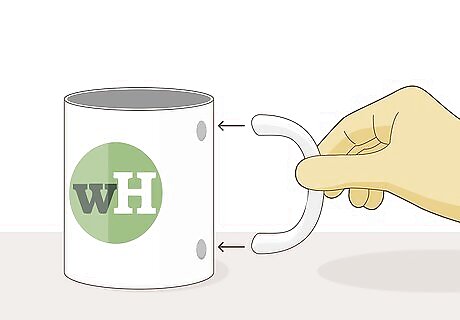
Make small repairs with epoxy resin. A cracked vase, broken coffee mug, or damaged picture frame can all be repaired with epoxy resin. Apply the resin to the damaged areas and reconnect the parts together. Allow the epoxy to cure and item will be fully bonded back together. The epoxy is durable, safe to clean, and won’t break down.
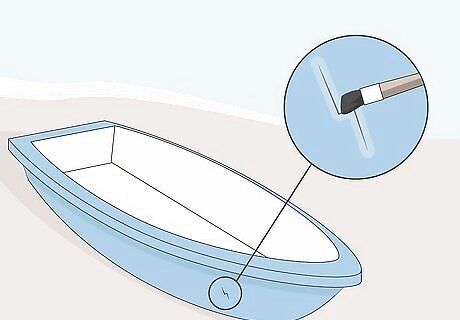
Repair fiberglass with epoxy resin. The small fibers in fiberglass bond very well with epoxy to create a very strong bond. Use epoxy resin on models, fiberglass siding, boats, or any other fiberglass items. Apply a thin layer and allow it to fully cure.Tip: If you’re using epoxy on fiberglass that is exposed to direct sunlight, like a boat or remote control airplane, apply the resin on the inside of the fiberglass so it isn’t directly exposed to sunlight. The ultraviolet radiation can cause the resin to eventually break down.
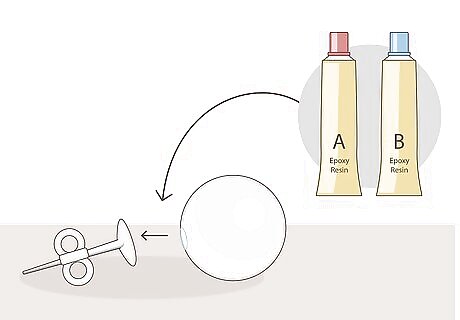
Connect pieces of jewelry together with resin glue. Epoxy resin glue is a great way to repair or create jewelry by placing a small amount where you want to connect the pieces together. The clear epoxy won’t be visible but will create a strong and long lasting bond. For example, you can reattach a pearl to an earring or create your own pearl earrings by connecting one to a stud earring. Use epoxy specially designed for jewelry. Check the packaging for specific curing times.
Making Art with Epoxy Resin
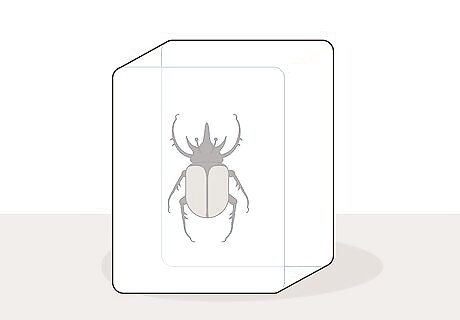
Pour epoxy resin into molds with flowers or insects. You can make clear molds containing flowers, bugs, drawings, shapes, or anything else you can fit into them. Use a mold like an ice cube tray, place the items inside of the mold, then pour enough clear epoxy resin to fill the mold. When it cures, you can remove it and display it. For example, put a beetle into the mold, then fill it with epoxy resin to create cool insect art. Use a few different flowers and place them in the mold with the resin to form a colorful scene. The resin won’t break down, so your creations will last indefinitely.

Place a picture in a mold to create an epoxy picture frame. Use a round or square mold and place a photograph in the center of it. Pour clear epoxy resin into the mold and allow it to harden and cure. A square mold will allow the mold to stand on its own when you display it.
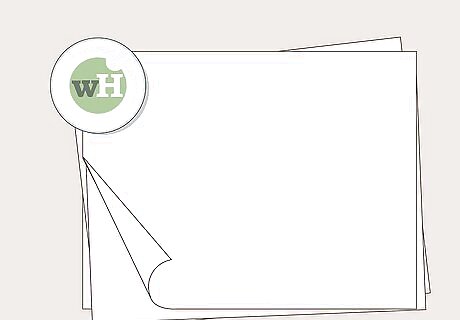
Create a custom paperweight with your initials. Use a round mold and cut out your initials using construction paper or foil and place them in the center. Pour the clear epoxy into the mold and allow it to cure. When you remove it from the mold, you can sand the rough side with sand paper so it’s smooth and can be displayed on your desk as a paperweight.Tip: Write your initials using calligraphy and cut them out for a fancy effect.
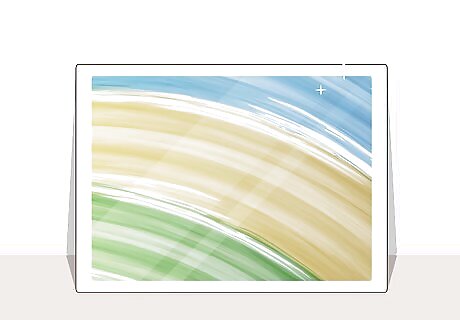
Cover a painted canvas with epoxy to create a textured painting. You can create a protective coating that also adds a layer of texture to a painting that you’ve done by brushing on a thin layer of epoxy. Add thicker layers of epoxy in areas where you want more texture. For example, you could paint a mountain scene and use the epoxy to create ridges where the mountains are. You can apply the epoxy while the paint is still wet to create a saturated or blended effect.


















Comments
0 comment